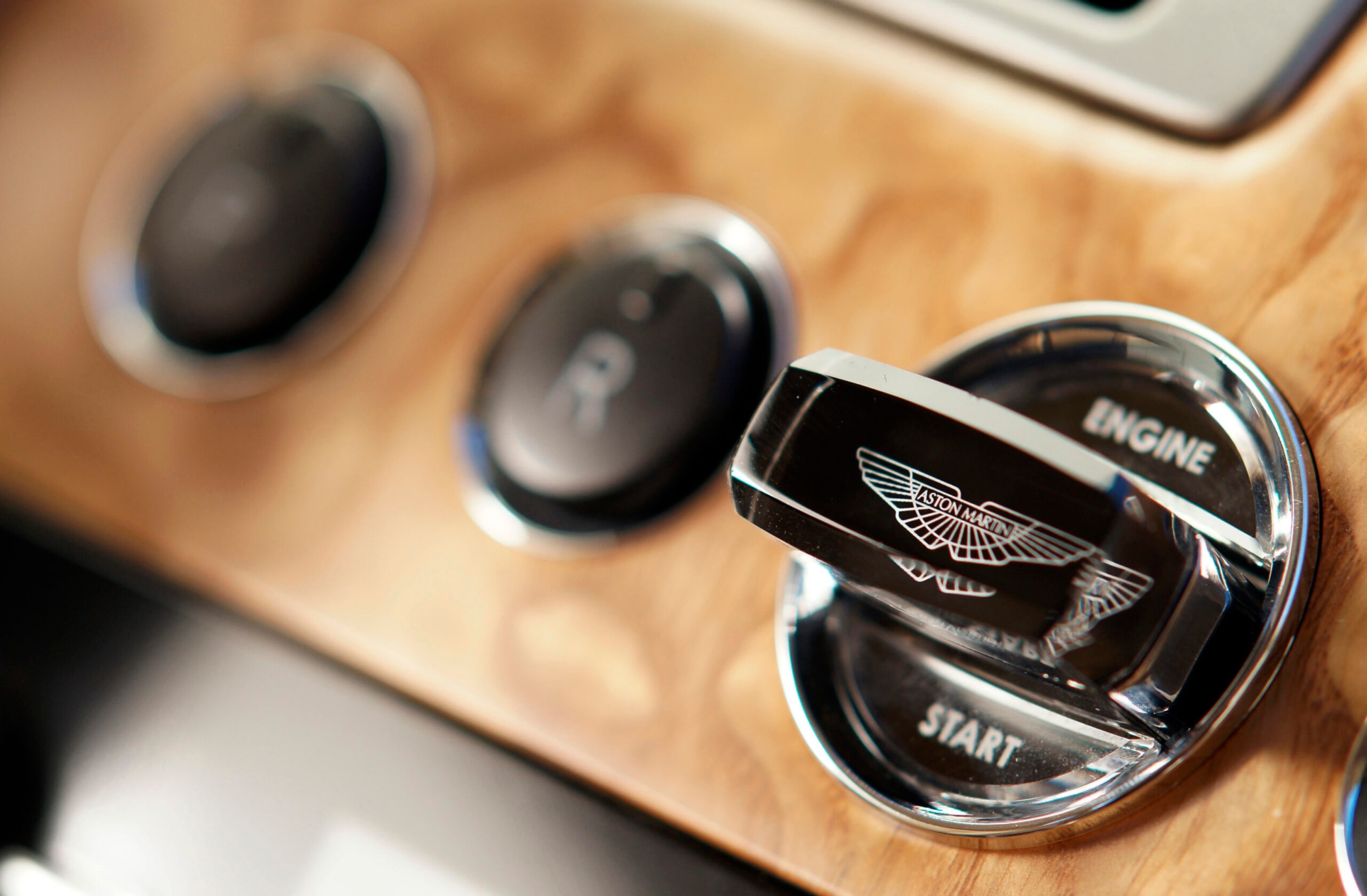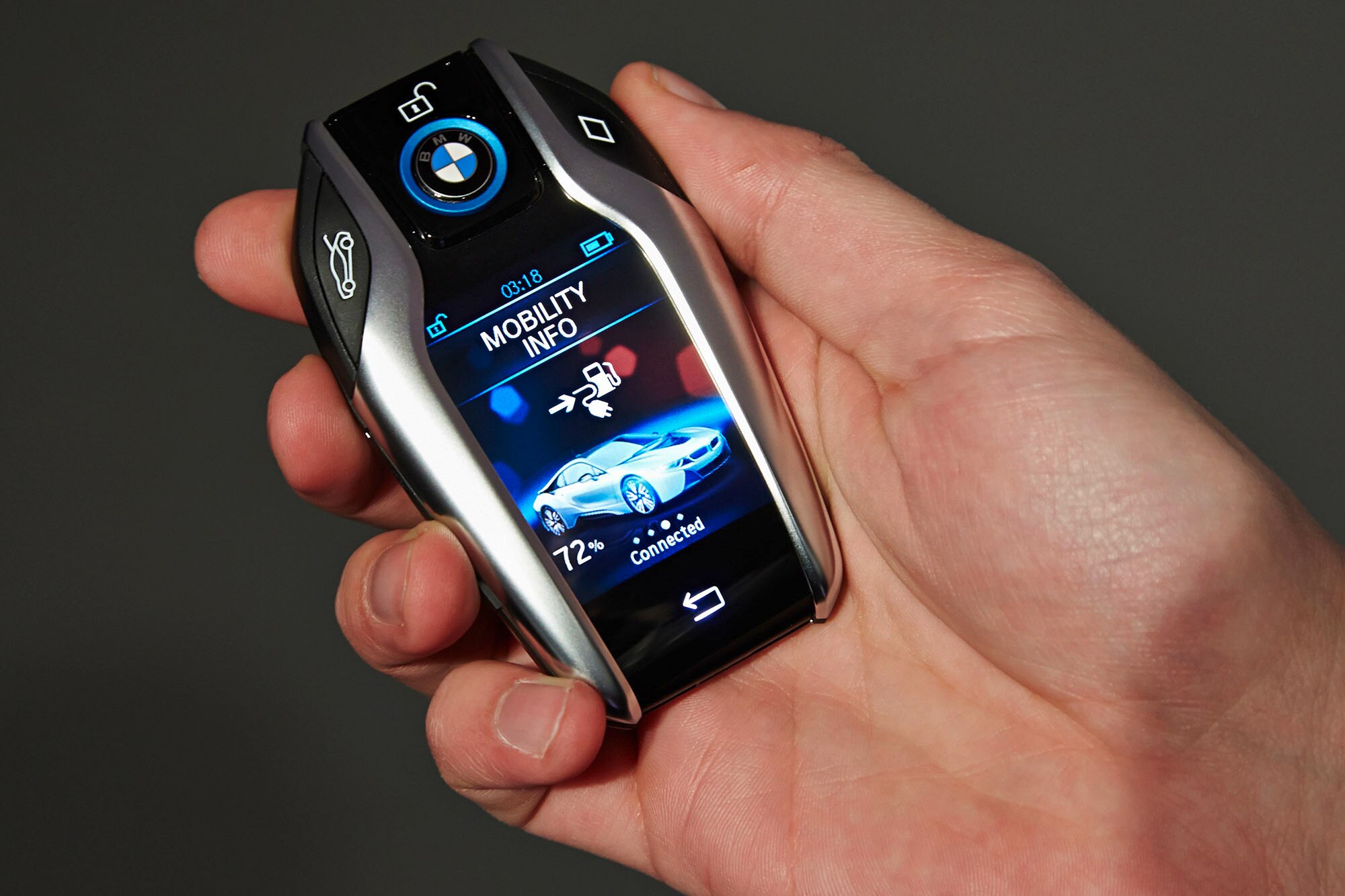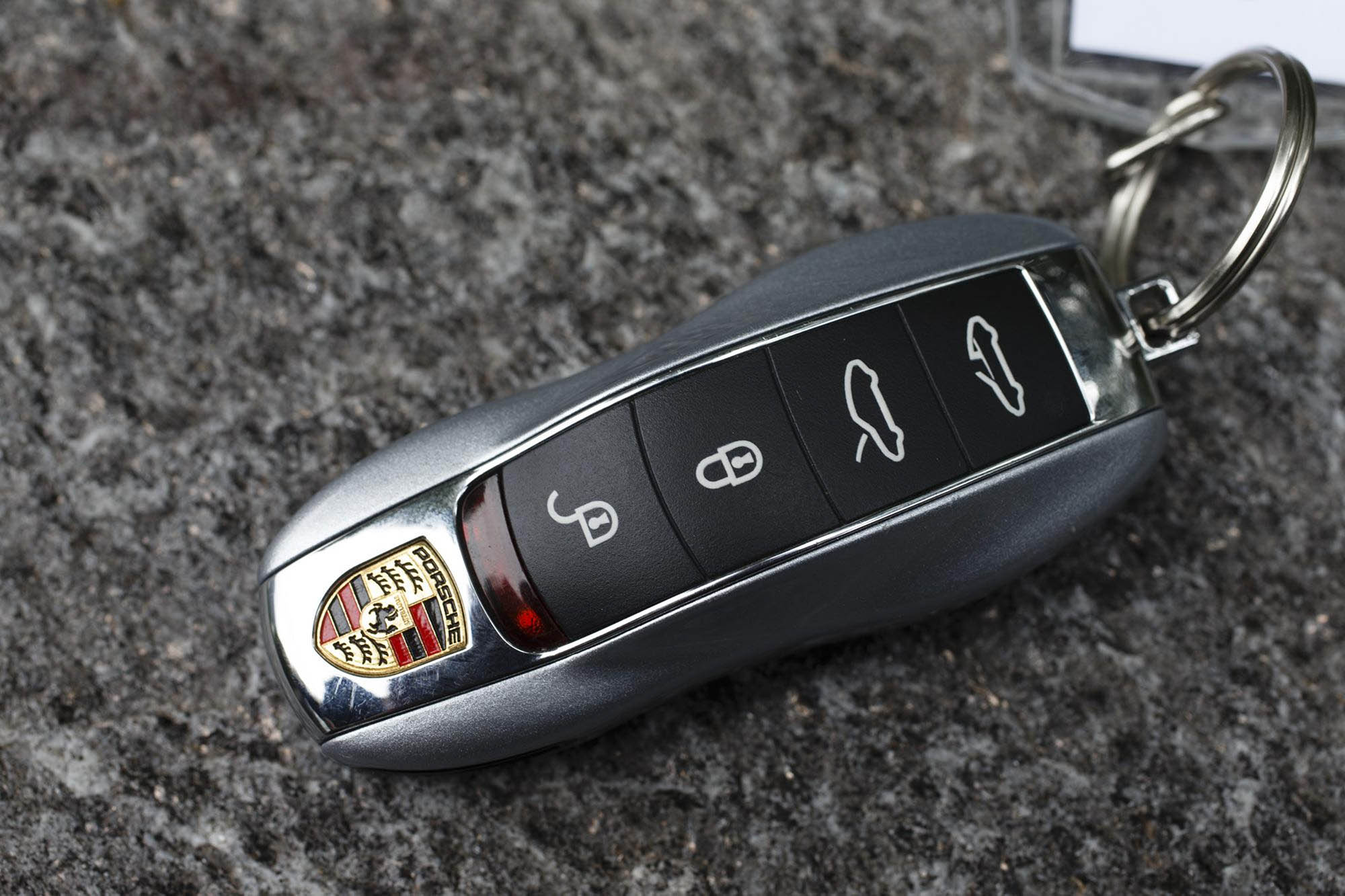5 of the Coolest Car Key Fobs
Some carmakers leave no stone unturned when it comes to design.
 Porsche
Porsche
Introduced in the 1980s, remote keyless entry technology gave carmakers an additional part to design: the key fob. These days, some brands settle for a basic-looking fob in the name of simplicity. Others go to greater lengths to create fobs that reflect the vehicle's identity.
 Aston Martin
Aston Martin
Aston Martin's Crystal Key Fob
Called the Emotion Control Unit (ECU) by Aston Martin, the automaker's crystal key fob made its debut for the 2009 model year. It's shaped like a standard rectangular key fob with buttons used to lock and unlock the doors, but the top part of it features the United Kingdom brand's winged logo embedded into a thick piece of crystal. When the fob is inserted into the dashboard, the crystal part sticks out and faces passengers to add a touch of elegance to the cabin.
 BMW
BMW
BMW's LCD Key Fob
BMW introduced a key fob with an integrated 2.2-inch touchscreen in 2015. Initially available only as an option on the i8, the fob resembles a miniature smartphone that allows the owner to communicate with the car.
The screen provides details such as the fuel level, whether the windows are closed, and the date of the next recommended service. BMW later made its touchscreen-equipped key fob available on other models and added more functions, including remote-controlled parking technology.
Kia's "Detonator" Key Fob
Kia designed a key fob specifically for the Stinger, its entry into the sports sedan segment. Owners can unlock the car and open the hatch by pressing on the small, rectangular buttons integrated into the side of the leather-upholstered fob.
With the fob in hand, locking the doors can feel like pressing on a detonator. Locking the doors requires pressing a bigger, round button situated at the top of the fob.
Mercedes-Benz's "Switchblade" Key Fob
Mercedes-Benz popularized the "switchblade" key fob when it released the R129-generation SL for 1990. The rectangular fob featured a larger button used to unlock and lock the car and a smaller button that deployed the physical key when pressed.
This design made the fob more compact and eliminated the rough key edges that can poke a hole through your pocket or bag. Mercedes-Benz continued to use this key fob design in the 1990s, and numerous carmakers have since adopted the design.
 Porsche
Porsche
Porsche's Car-Shaped Key Fob
Porsche offers its 911 with a key fob shaped like the car. Viewed from the top, the fob shares basic styling cues — such as a long hood and wide rear wheel arches — with the real car. The brand's logo appears on the front end, and the buttons used to unlock and lock the car and pop the trunk are integrated into the key's "roof panel."
Buyers can even order their key finished in the same color as their car. Other Porsche models, such as the Panamera, have also used a car-shaped fob design.
Written by humans.
Edited by humans.
 Ronan Glon
Ronan GlonRonan Glon is an American journalist and automotive historian based in France. He enjoys working on old cars and spending time outdoors seeking out his next project car.
Related articles
View more related articles